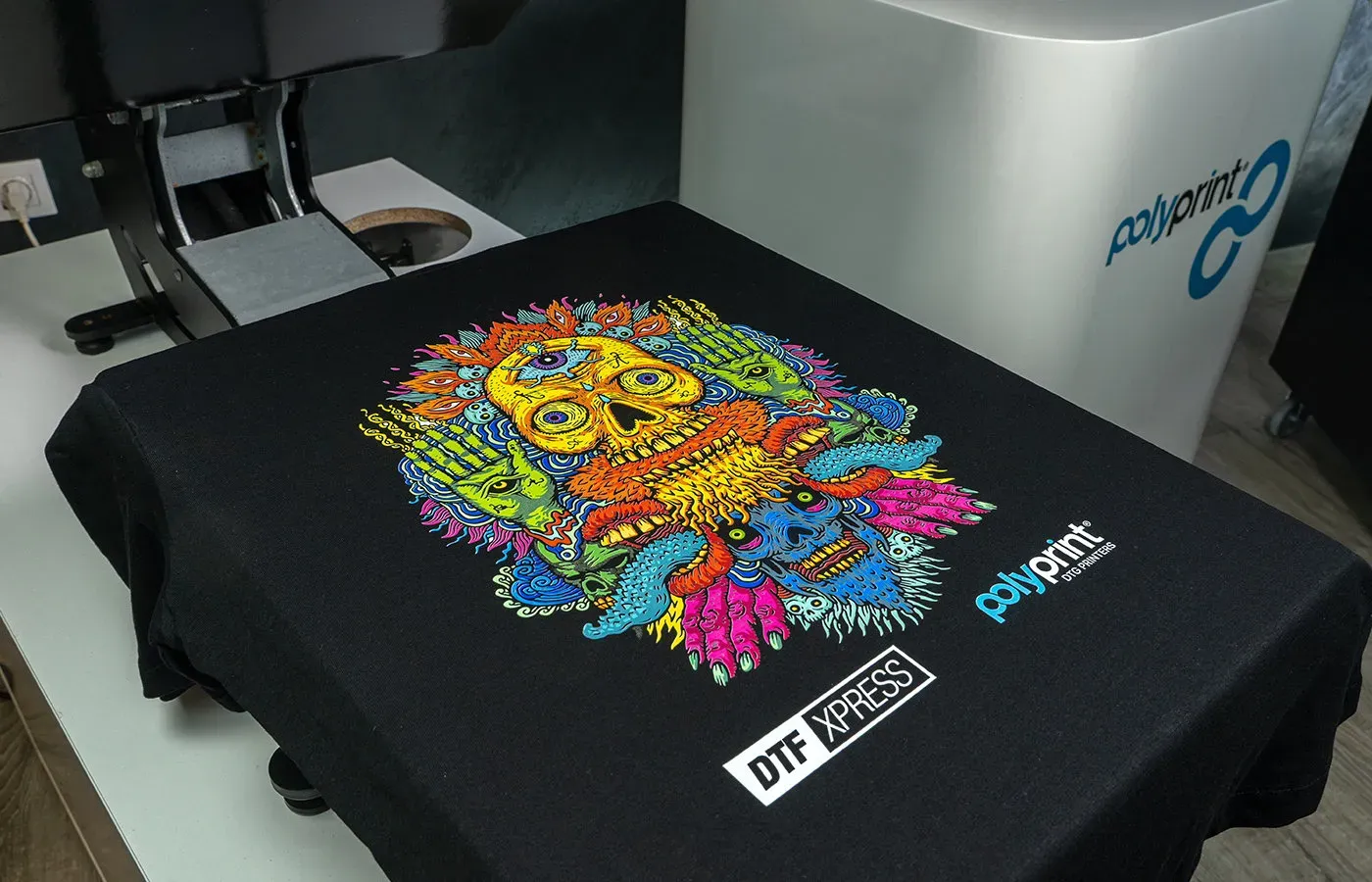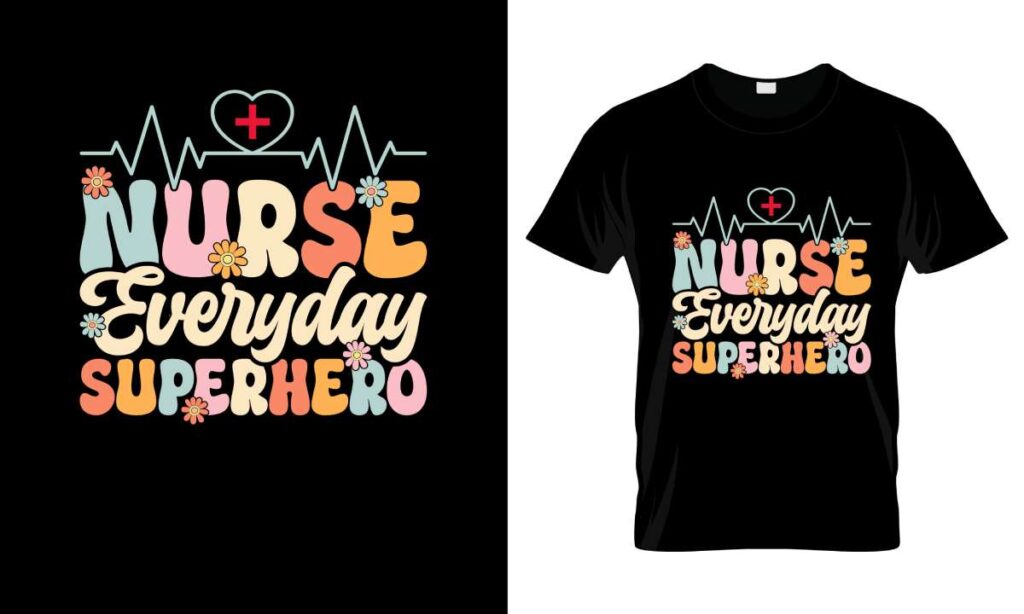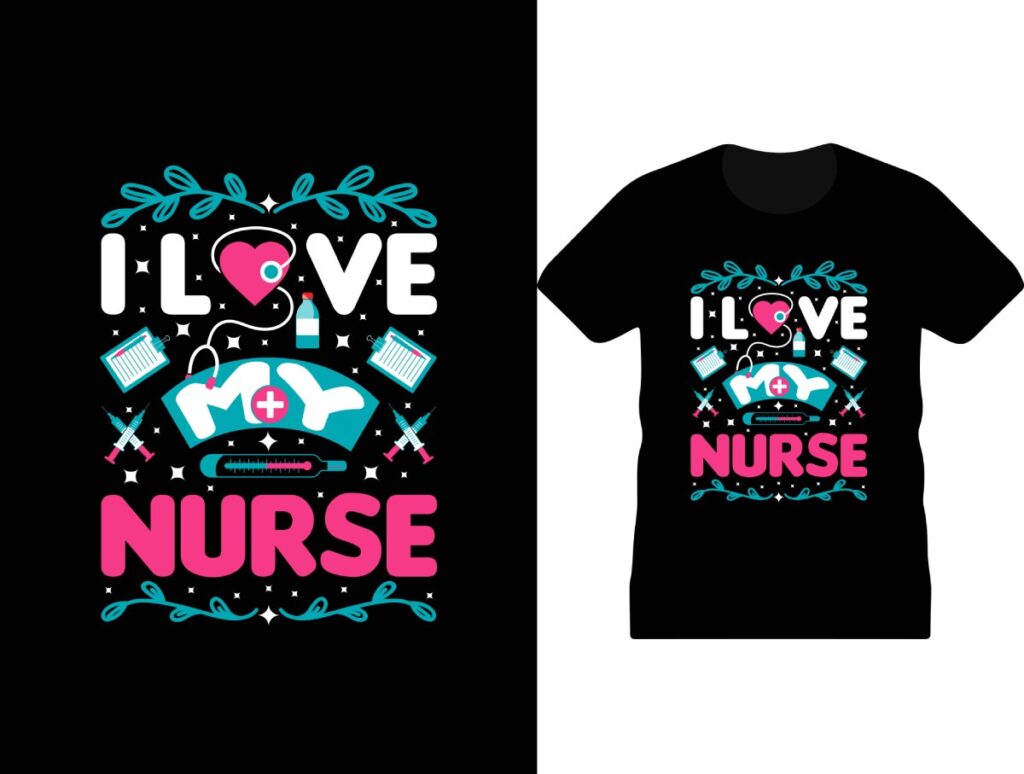DTF printing, short for Direct-to-Film printing, has revolutionized the custom apparel industry by providing a fast and efficient method for creating vibrant designs on various fabric materials. This innovative technique not only allows for high-quality prints but also caters to the diverse needs of small businesses and creative enthusiasts eager to make their mark. With the right DTF printing tools, such as specialized printers and heat press for DTF, anyone can easily elevate their custom apparel printing game. Furthermore, the advent of sustainable DTF printing practices means that creators can produce eye-catching designs while adhering to eco-friendly standards. In this guide, we’ll explore the key components of DTF technology and how you can harness its potential to thrive in the competitive world of custom apparel.
Direct-to-Film printing is an exciting advancement in the realm of fabric printing, quickly gaining popularity for its ability to produce eye-catching apparel designs. This method, which involves transferring images from a film directly onto fabric, is perfect for those looking to create stunning graphics with minimal hassle. Utilizing advanced printing technology and a heat press specifically designed for DTF applications, users can rely on high-quality results every time. Additionally, as sustainability becomes increasingly important in the textile industry, this innovative printing style is paving the way for greener practices in custom garment production. As we delve deeper into the essentials of DTF printing, you’ll uncover the tools and techniques that will empower you to stand out in the bustling market of personalized apparel.
Understanding DTF Printing Technology
Direct-to-Film (DTF) printing is a cutting-edge technology that has transformed the landscape of custom apparel printing. Unlike traditional methods, DTF printing involves printing designs onto a special type of film, which is later transferred onto the fabric using a heat press. This process allows for high-detail imagery and vibrant colors that can withstand the test of time, making it a favorite among t-shirt printers and garment decorators.
Moreover, DTF technology enables users to print on a variety of fabrics, including cotton, polyester, and blends, enhancing its versatility. This flexibility makes it an ideal choice for small businesses looking to expand their product lines. As an emerging force in the printing industry, DTF technology continues to evolve, bringing forth advancements that help streamline the printing process and improve print quality.
Essential DTF Printing Tools for Beginners
To start your journey in DTF printing, understanding the essential tools is vital. At the core of this process is the DTF printer, specifically designed to work with PET films and specialized inks. These printers, like those from manufacturers such as Epson and Roland, are engineered to produce high-resolution and color-accurate designs, essential for impressive custom apparel.
In addition to the DTF printer, a high-quality heat press is crucial for transferring prints onto fabric. The heat press applies the necessary heat and pressure to ensure a successful transfer, and choosing a model with adjustable temperature settings can greatly influence the quality of your final product. With the right combination of tools, you can start creating stunning designs that stand out in the competitive apparel market.
The Role of Adhesive Powder in DTF Printing
The specialized adhesive powder used in DTF printing plays a pivotal role in the overall quality and durability of prints. This hot-melt powder is sprinkled onto the ink while it’s still wet, helping to bond the design to the fabric during the heat transfer process. High-quality adhesive powder not only improves adherence but also ensures that the prints remain intact even after multiple wash cycles, which is critical for apparel longevity.
It is important to source your adhesive powder from trusted suppliers to guarantee its efficacy. Using subpar or generic products can lead to peeling or fading, diminishing the overall appeal of your custom designs. Therefore, investing in quality materials, including the right adhesive powder, can significantly enhance the success of your DTF printing projects.
Choosing the Right PET Film for DTF Printing
Selecting the appropriate PET film is a crucial aspect of successful DTF printing. The quality of the PET film directly impacts the vibrancy of the colors and the overall clarity of the printed designs. High-quality PET films are engineered to be clear and resistant to smudging, which facilitates the transfer of intricate designs to various fabrics.
Moreover, the thickness of the PET film can also influence the printing process. Thicker films may handle ink better and allow for more vivid colors, whereas thinner films could result in smudging during the heat transfer process. Therefore, it’s essential to experiment with different types of PET film to find the one that best suits your specific printing needs.
Sustainability in DTF Printing Practices
In recent years, sustainability has become a key consideration for businesses, including those in the custom apparel printing sector. DTF printing technology has adapted to incorporate eco-friendly practices, allowing businesses to align with modern consumer values. This involves using water-based inks and recyclable PET films, helping reduce the environmental impact of each print run.
By adopting sustainable DTF printing practices, brands not only contribute to environmental conservation but also appeal to a growing demographic of eco-conscious consumers. Marketing your products as sustainably produced can differentiate your brand in a saturated market, enhancing customer loyalty and potentially boosting sales.
Staying Updated on DTF Market Trends
As the demand for DTF printing technology continues to grow, staying informed about market trends is vital for any business looking to thrive in this space. Market forecasts indicate a significant increase in the popularity of personalized apparel, meaning businesses must be agile and responsive to emerging trends to capitalize on new opportunities.
Regularly engaging with industry resources, such as trade magazines and online forums, can provide valuable insights into advancements in DTF technology and shifts in consumer preferences. Keeping a finger on the pulse of these trends ensures that you can adapt your offerings and marketing strategies to meet the evolving needs of your target audience.
Frequently Asked Questions
What is DTF printing and how does it work?
DTF printing, or Direct-to-Film printing, is a revolutionary custom apparel printing method that transfers vibrant designs onto various fabric types. The process involves printing on PET film using specialized inks, applying hot-melt adhesive powder, and then using a heat press for transfer, ensuring high-quality image reproduction that is durable and colorful.
What tools are essential for successful DTF printing?
To master DTF printing, you will need several key tools including a DTF printer optimized for PET film, a quality heat press for transferring designs, high-quality adhesive powder, clear PET film, and suitable water-based inks. These tools ensure optimal results in custom apparel printing.
How do I choose the right heat press for DTF printing?
When selecting a heat press for DTF printing, look for features such as adjustable temperature settings and proper pressure options. A reliable heat press is crucial to ensure the powder adheres well and results in durable prints, without damaging the fabric.
Can DTF printing be considered a sustainable printing method?
Yes, DTF printing can be environmentally sustainable as it allows for the use of eco-friendly materials and practices. Many businesses are adopting sustainable practices, like using water-based inks and recyclable PET films, aligning with the growing consumer demand for environmentally conscious options in custom apparel printing.
What types of fabrics can be printed with DTF technology?
DTF technology is versatile and can print on various fabrics including cotton, polyester, and blends. This flexibility makes it an attractive option for custom apparel businesses looking to expand their product offerings.
What are the current trends in DTF printing technology?
Recent trends in DTF printing technology include advancements in ink formulations and printer capabilities, making this method more accessible and cost-effective for smaller operations. Also, there is a growing emphasis on sustainability, with businesses shifting towards eco-friendly materials in their custom apparel printing.
| Key Tools for DTF Printing | Description |
|---|---|
| DTF Printer | A specialized printer optimized for printing on PET film. |
| Heat Press | Essential for transferring printed designs onto fabric. |
| Adhesive Powder | Hot-melt powder that bonds the print to the fabric. |
| PET Film | Clear film used for printing, affecting vibrancy and clarity. |
| Inks | Water-based inks providing color vibrancy and durability. |
Summary
DTF printing is an innovative technique transforming the landscape of custom apparel printing. This method, known for its ability to create vivid and durable designs, requires essential tools like a dedicated DTF printer, quality PET film, and specialized adhesive powders to succeed. As technology advances and sustainability becomes increasingly important to consumers, staying informed on market trends and investing in the right equipment can significantly enhance your custom apparel business. Passionately engaging with the DTF printing process, equipped with the right knowledge and tools, will not only elevate your printing quality but also distinguish your brand in this competitive space.



